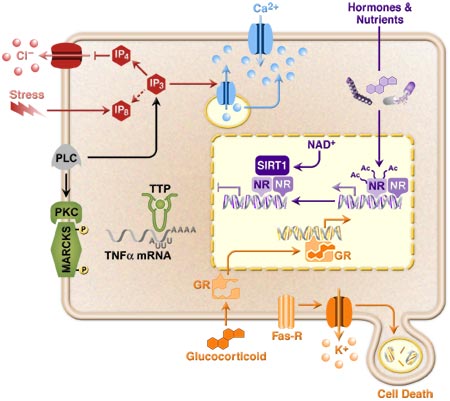 |
|||
Research SummaryThe overall goal of the Laboratory of Signal Transduction (LST) is to define the mechanisms that cells, tissues and organisms use to respond to physiological and environmental stimuli. Responses of cells to environmental signals, toxins and stressors have profound implications for diverse aspects of human health and disease including development, cystic fibrosis, diabetes, asthma, heart, autoimmune diseases and cancer. 
Several signal transduction pathways that occur in the human cell.
The delineation of the signal transduction pathways affected in these and other complex human diseases is likely to present new avenues for therapeutic intervention and understanding of human disease mechanisms. The Laboratory of Signal Transduction seeks to achieve this goal through cutting edge basic research and training of junior scientists in aspects of environmental health related science that are critical to the mission of NIEHS. It is anticipated that research in signal transduction will have a central role in environmental human health in the post-genomic era. The LST investigates the following topics:
Scientific Support Staff
|
|||

